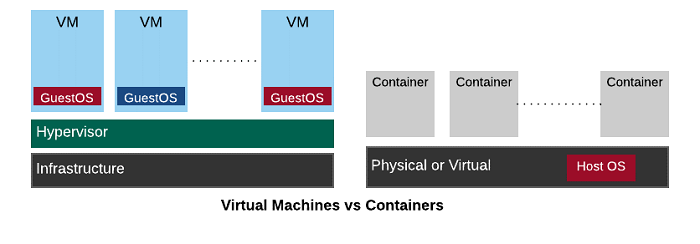
Discussions with IT leaders about “containers” can often be summarized as this:
As a CxO, I face the constant challenge of doing more with less. IT budgets continue to decrease and I have less resources, yet the amount of work to deliver is greater than ever before. I spend far too many hours dedicated to resolving budgetary constraints. In addition, the IT landscape is undergoing a rapid change and new technologies are being introduced all the time. The latest topic I hear from my trusted advisors is the implementation of a “container strategy.” I want to understand:
- What are containers?
- What is the enterprise value to transitioning to containers?
- Why should I shift to containers now? Are there disadvantages if we don’t adopt?
- Are containers mature enough for enterprise consumption?
- How do I get my enterprise up to speed with container adoption?
Let’s start at the beginning.
Containers
In the past 10 years or so, enterprises have moved from physical infrastructure to virtual machines (VMs). The key advantage of moving towards VMs is a reduction in the datacenter footprint. You can fit more applications on a fewer number of physical machines by running multiple VMs on the same physical box. Using containers is another way of packing applications in a much lighter weight and with a much faster delivery model. They are a fancy way of running multiple application processes on a single box, regardless of whether that box is a VM or a physical machine. In addition, containers also play a major role in the context of fulfilling DevOps, microservices, and cloud strategy.
Containers versus VMs
Containers differ from VMs in a few simple ways. A VM, while not a physical machine, behaves just like one. It is an isolated environment that includes everything, starting with a complete (guest) operating system. On the other hand, containers are processes that share the resources on the same machine, which could be physical or virtual. Containers are notably interesting because:
- VMs are heavy, comparatively. Containers are light because they only include those libraries needed by the applications they run.
- VMs take minutes to start up. Containers start up in seconds.
- Typically, many more containers fit into your infrastructure than VMs.

The technology has evolved enough to keep these containers secure, isolated from each other, and “with right design choices” to make sure that bad containers don’t affect the performance of other containers running on the same box. In fact, operating systems are built to optimize and run containers natively.
Still, you need to make the right choices when moving toward containers. You need to do enough due diligence so you choose the right technology partners and vendors to enable containers. Open source technologies play a key role. The open source Docker project has made containers with a layering format that is easy to build and use. The Open Container Initiative (OCI) has become an open source standard for containers supported by all major technology vendors. Open source technology providers like Red Hat make container-ready, secure operating systems available. For example, Red Hat Enterprise Linux 7.x , including Red Hat Enterprise Linux Atomic Host, are optimized to run containers natively and also provide tools to monitor and manage containers. Other open source projects such as CoreOS from Tectonic are also coming into the market. Indeed, containers are ready for adoption by enterprises.
Container platforms
Container platforms make containers enterprise-consumable. You may have dealt with VM sprawl in your enterprises over the past decade, and container sprawl can be many times worse. Running your containers at scale across the various hosts in your datacenter, ensuring high availability for your applications despite container failure, automated health checks, automated scaling of containers based on incoming workloads, etc., are some of the key features you can expect from a container platform.
While running containers on such a platform is positioned as Container-as-a-Service model (CaaS), some additional features of these platforms, such as build and deployment automation, make this platform a full-fledged Platform-as-a-Service (PaaS). While CaaS can run containers for you at scale, PaaS would take your source code, build it, create containers, and run those containers for you. In addition, these platforms provide complete operations management features, such as management and monitoring of the cluster, detection of security flaws with the containers and run safe containers, tracking logs and metrics, etc.
While some vendors are using their proprietary technologies to build container platforms, in general, companies are standardizing them around open source technologies built around Kubernetes (or K8S in short). K8S is an open source project that was started by Google, and many large platform vendors now support it. K8S is also part of Cloud Native Computing Foundation (CNCF), which is evolving as a standards body for cloud-centric technologies. Standardization around open source orchestration technologies is very important when you make your choices on a container platform. It basically allows you be portable across container platforms if you don’t like the choice you made the first time. K8S also allows your container workloads to be portable across different public clouds. These are the reasons why we see more and more technology companies using Kubernetes.
A few enterprises are trying to build their own DIY container platforms by stitching together several open source projects that include K8S. This is definitely a better solution than going with proprietary technologies, but it also includes lot of plumbing to get it to work. However, an enterprise’s ability to sustain and maintain such DIY platforms should be considered seriously. Many enterprises are not in the job of creating IT Platforms, rather they wish to run their mainstream business. There are many K8S-based solutions available, such as Red Hat’s OpenShift Container Platform, Apprenda, Deis, Rancher, etc., which provide enterprise-ready versions of a platform, each with different levels of maturity in terms of features they provide.
These solutions are certified and supported by vendors. Some of these are comprehensive open source PaaS solutions, while others may be CaaS. Based on your enterprise needs, these solutions may serve as better alternatives than a DIY container platform.
Enterprise concerns and their relationship to containers
Today, almost every enterprise is dealing with a digital transformation that impacts multiple areas, including strategies for DevOps, microservices, and the cloud. Containers play a particular role in each of these areas.
DevOps strategy
IT organizations are divided into operations and application development. They operate as two separate teams, and each has its own set of goals. Most of the enterprises are moving in the direction of DevOps to bring these two teams together.
